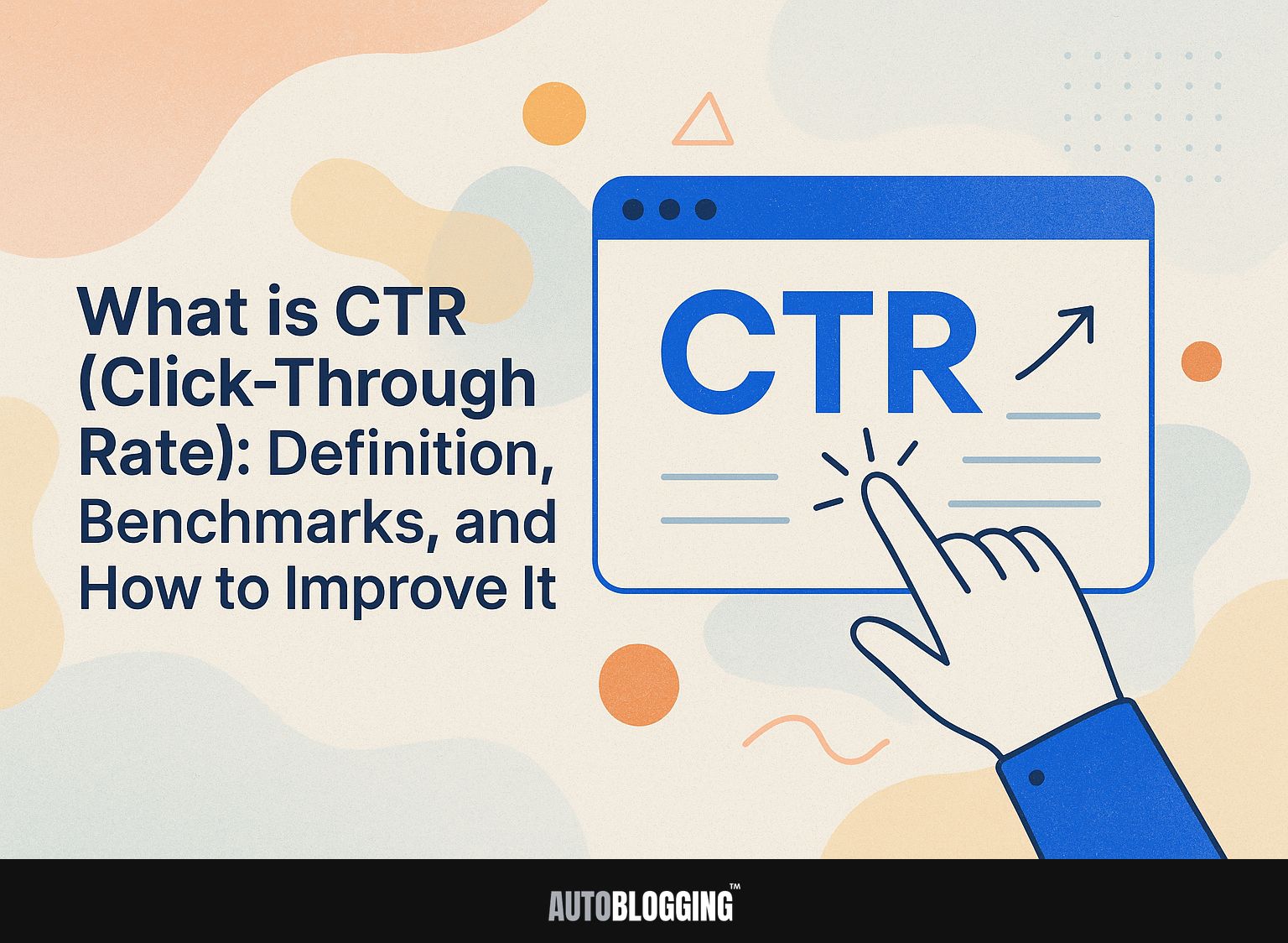
Improving your digital marketing begins with knowing your click-through rate (CTR). This essential metric bridges the gap between your calls to action and the conversion funnel, directly influencing your success in organic search results and Google Ads. In this article, we will explain CTR, look at typical standards in the industry, and provide practical methods to increase your rate, making sure you make the most of every chance to connect with your audience. Learn about CTR and improve your marketing skills!
Key Takeaways:
- CTR is an important number in online advertising, showing the percentage of people who click on an ad.
- Average CTR benchmarks vary by industry and are influenced by factors like ad positioning, target audience relevance, and content quality.
- To improve CTR, concentrate on writing headlines that catch the eye, using CTAs, A/B testing, and making ad targeting better.
Contents
1. Importance of CTR in Digital Marketing
A high CTR often indicates effective digital marketing campaigns, directly impacting conversion funnels and overall marketing strategy success.
To illustrate this, consider the correlation between CTR and conversion rates: campaigns that achieve a 5% CTR can see up to 50% higher conversions compared to those with lower rates.
To improve your click-through rate (CTR), try:
- A/B testing your ad texts and calls to action,
- using attention-grabbing images, and
- ensuring your messages align with your audience’s interests.
Tools like Google Analytics and SEMrush can help you track engagement metrics, allowing for data-driven adjustments to improve your overall campaign performance (our title tag SEO best practices guide can further refine your strategy).
2. Overview of the Article
This article gives a complete guide on CTR. It covers what CTR means, typical rates, what influences it, and practical advice to make it better.
- To improve your click-through rate (CTR), begin by refining your headlines. Use captivating language and include numbers or questions. For instance, instead of ‘Tips for Marketing,’ try ’10 Reliable Marketing Methods to Increase Sales.’
- Try different versions of your email subject lines and ad copy using tools like Mailchimp or Google Ads to see which ones your audience likes best. Using strong visuals and clear calls-to-action leads to better engagement.
- Check your analytics often to adjust your plans using performance data.
Definition of Click-Through Rate (CTR)
Click-Through Rate (CTR) is an important marketing measurement. It calculates the number of users who click on a link compared to the total number of users who see the page, email, or ad. Understanding CTR is crucial for optimizing website performance, particularly in the context of how Google AI impacts organic clicks. Learn more about strategies for AI optimization to adapt to these changes.
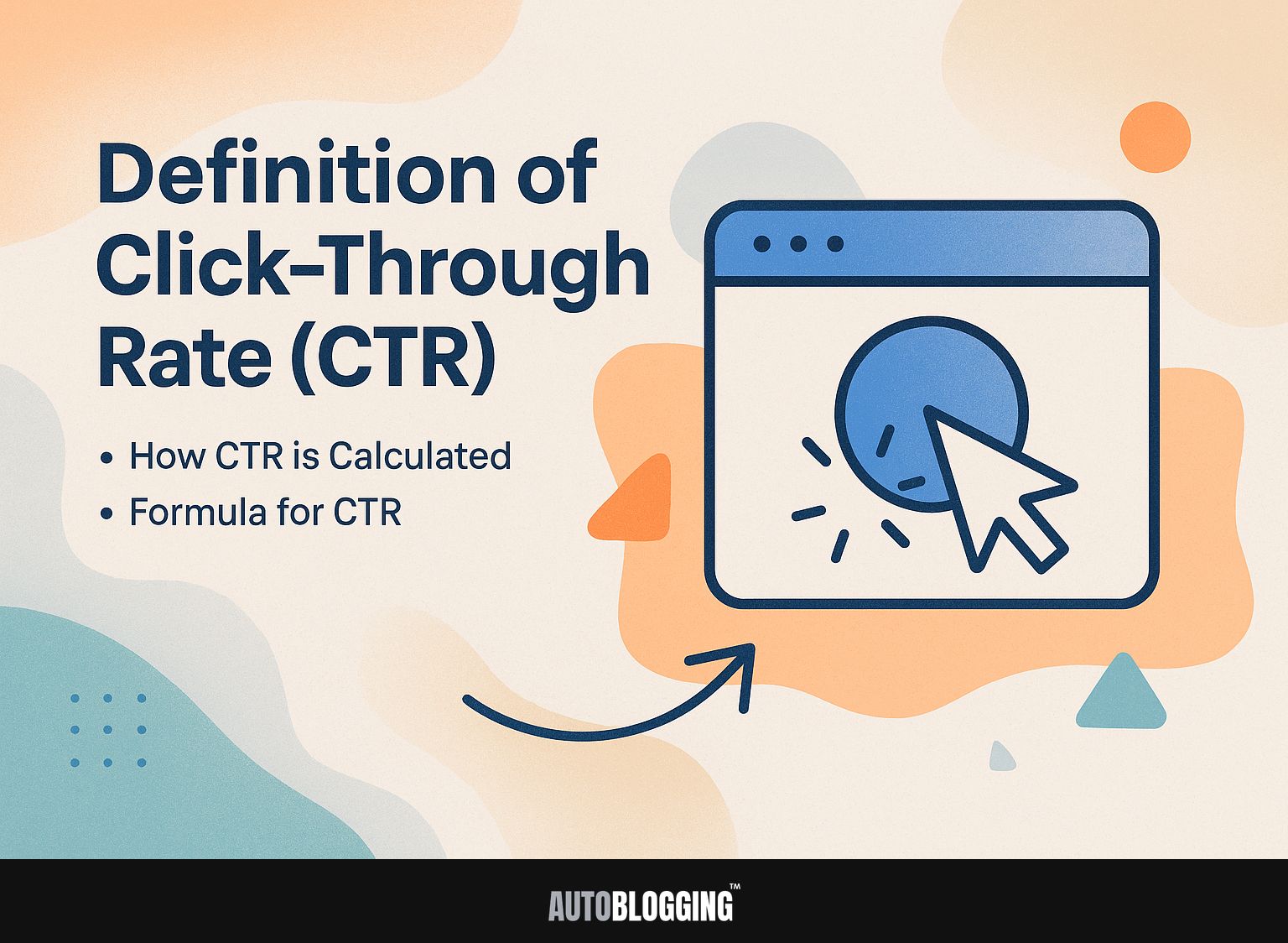
1. How CTR is Calculated
CTR is calculated by dividing the number of clicks by the number of impressions and multiplying by 100 to express it as a percentage.
For example, if your ad received 150 clicks from 25,000 impressions, the calculation would be (150 / 25,000) * 100, resulting in a CTR of 0.6%.
To monitor and improve CTR, use tools like Google Analytics or Ad Manager, which provide information on ad performance.
Trying out various ad styles, headlines, and targeting methods can show what works best for your audience, which might help raise your click-through rate over time.
2. Formula for CTR
The way to calculate CTR is simple: CTR = (Clicks / Impressions) x 100. To better understand how CTR impacts your marketing efforts, let’s consider a few practical scenarios.
For example, if your ad received 500 clicks with 10,000 impressions, your CTR would be 5%. Use tools like Google Analytics or SEMrush to track these metrics over time.
If a particular ad has a low CTR, experiment with changes such as:
- Tweaking the headline
- Adjusting the targeting parameters
- Enhancing the visuals
Regularly reviewing and making necessary changes can greatly increase involvement, improving your campaign’s outcomes.
Benchmarks for CTR
Comparing CTR across different industries helps marketers see how they are doing compared to others and to industry norms.
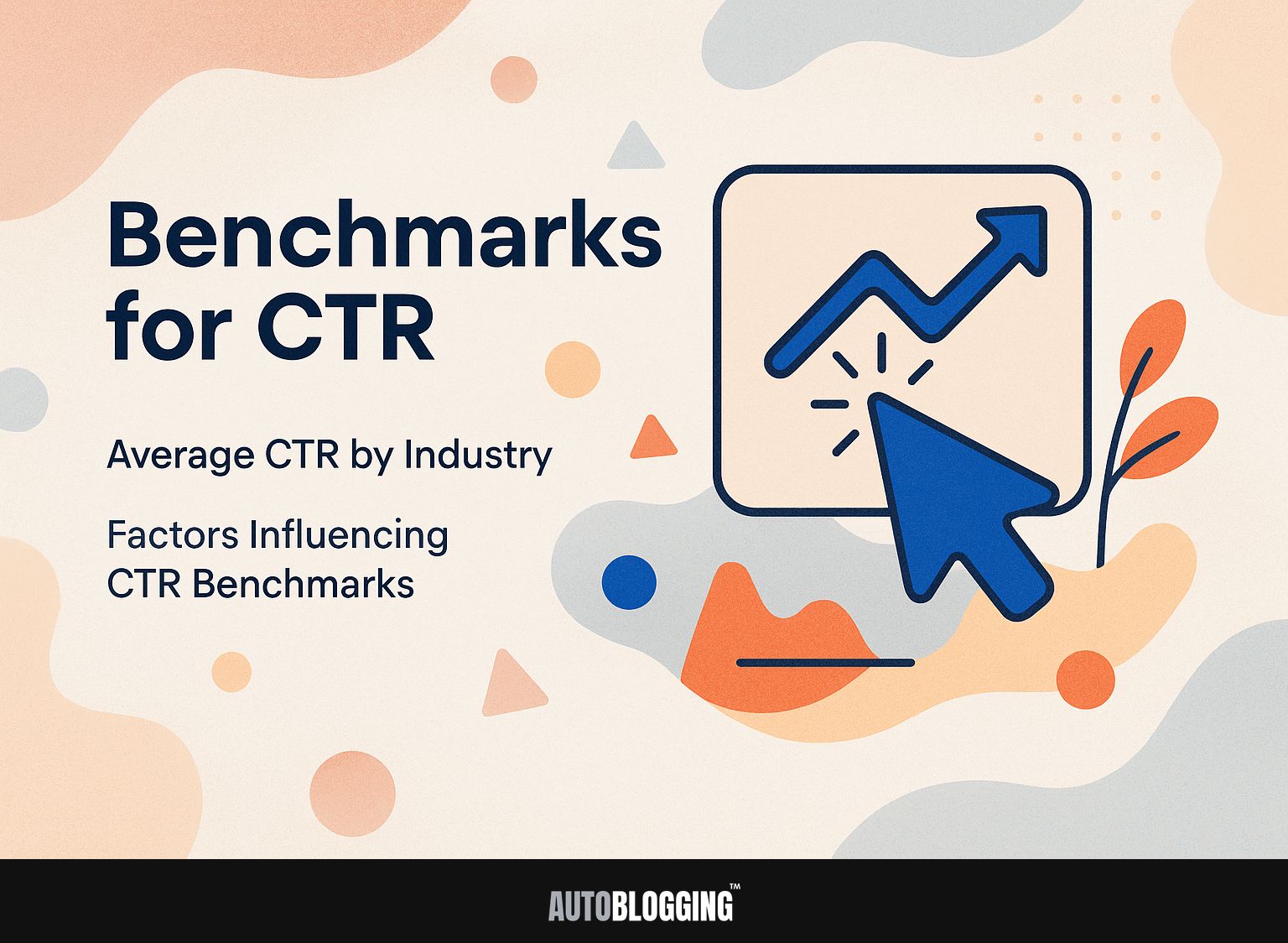
1. Average CTR by Industry
Average CTR varies significantly by industry, with e-commerce averaging 2%, while the finance sector typically sees around 3%.
In addition, industries such as healthcare often experience CTRs around 2.5%, while travel sectors may benefit from higher engagement, averaging about 4%.
To improve your campaigns, think about dividing your audience using these benchmarks; for example, sending specific messages to finance prospects can use higher click-through rate expectations to adjust your plan.
Tools like Google Analytics can help analyze CTR performance across different campaigns, allowing you to adjust your approach in real-time for better results.
2. Factors Influencing CTR Benchmarks
Different things can affect CTR benchmarks, like where the ad is placed, who the ad is aimed at, and how good the content is overall.
Ad placement plays a critical role; for instance, ads positioned above the fold often achieve higher click-through rates than those buried at the bottom.
Targeting the correct audience can increase click-through rates by up to 20%. Using tools like Facebook Ads Manager allows marketers to define their target demographics, interests, and behaviors effectively.
Focusing on high-quality, engaging content, like interesting visuals or action-focused writing, increases user interaction, changing passive viewers into active participants.
Factors Affecting CTR
Knowing what influences CTR is important for marketers who want to improve their ads’ results and how users interact with them. Understanding the importance of user experience (UX) can significantly impact how users engage with your advertisements.
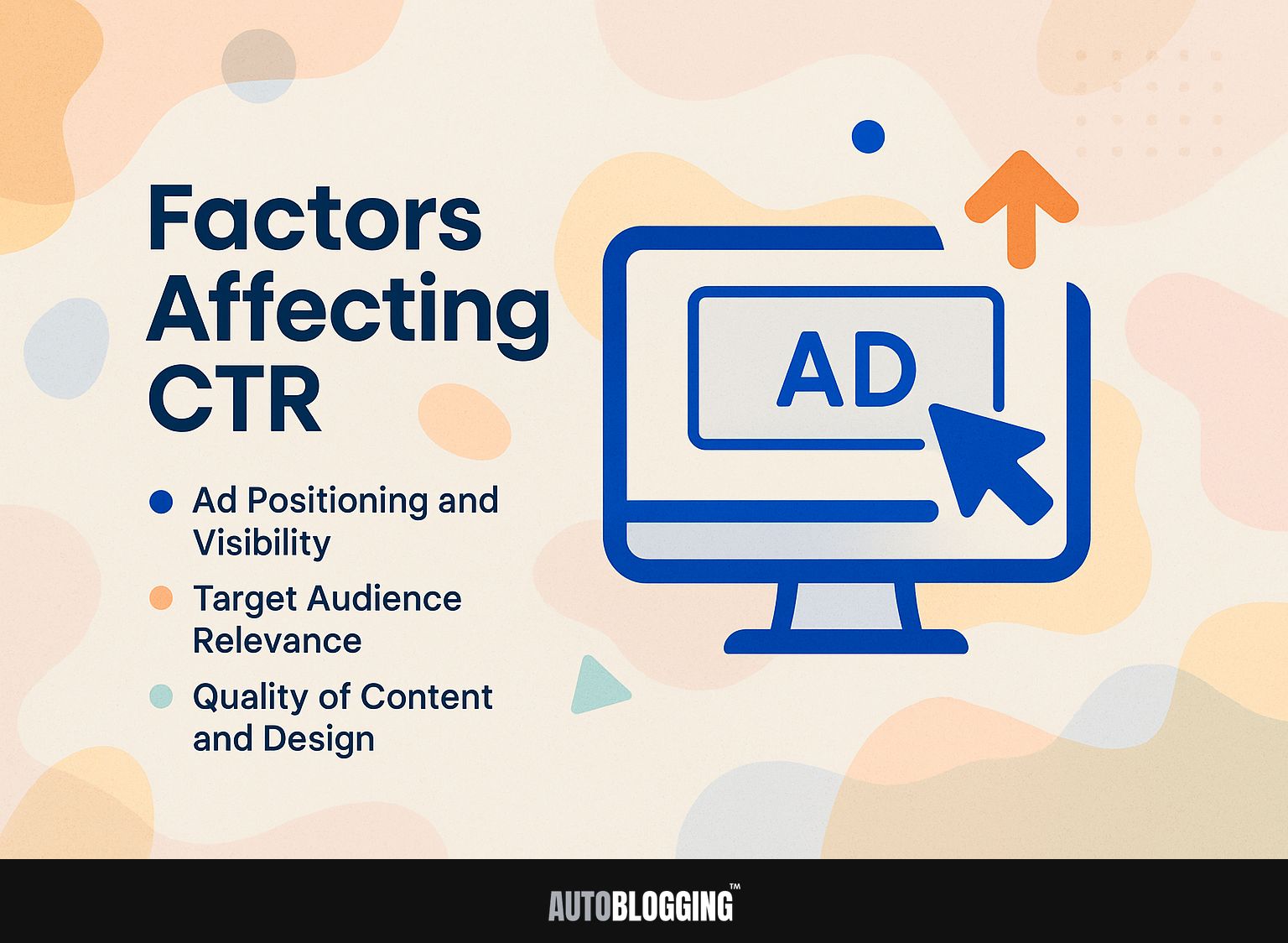
1. Ad Positioning and Visibility
Ad positioning significantly impacts visibility; ads placed above the fold typically enjoy a 25% higher CTR compared to those at the bottom.
To improve ad placement, think about these strategies.
- Always test various positions; a study from Wordstream found that ads positioned at the top center perform better than sidebars.
- Use tools like Google Optimize to run A/B tests on different designs.
- Take a look at what competitors are doing-companies like Amazon place sponsored products in prominent areas, which significantly increases sales.
- Watch heatmaps using software such as Hotjar; they reveal where users engage most, guiding your ad positioning decisions.
2. Target Audience Relevance
Ads targeted to a relevant audience can achieve CTRs up to 50% higher than those aimed at a broader audience without segmentation.
To improve how you divide your audience into groups, begin by examining customer information from CRM tools such as HubSpot or Salesforce.
Create user personas by segmenting your audience based on demographics, behavior, or interests. For example, if you notice a particular demographic engaging more with your product, tailor your messaging to reflect their values and pain points.
Use tools like Google Analytics to monitor engagement data for these segments and improve your targeting. By regularly testing and changing your method, you can greatly improve your click-through rates and return on investment.
3. Quality of Content and Design
Good content and attractive design are important because research shows that well-made ads can improve click-through rates by 30% or more. To make your ads better, follow these tips:
- Use attention-grabbing images that relate to your audience.
- Keep your brand’s style the same in all aspects.
- Write clear, engaging text.
For example, tools like Canva can help create appealing graphics, while A/B testing platforms like Optimizely allow you to test and improve different ad versions.
Analyze successful campaigns to learn which elements contributed to their effectiveness, and implement similar strategies in your own ads. Use different colors to emphasize key messages, making your ads more attractive.
How to Improve CTR
Improving CTR involves using different strategies and best practices to increase user interaction and get the most out of ads.
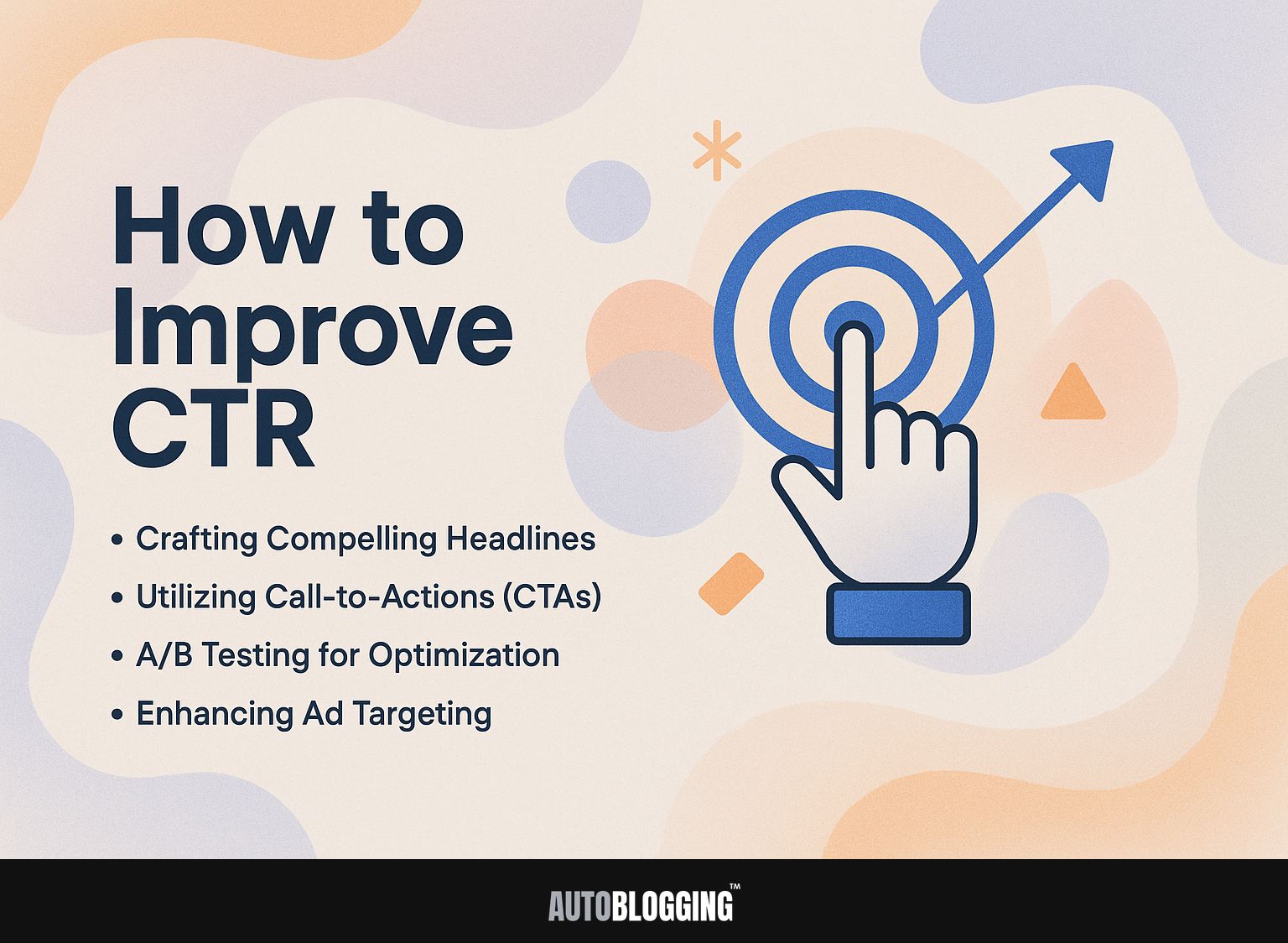
1. Crafting Compelling Headlines
Writing catchy headlines can increase click rates by up to 40%, making it a great way to get better results. To write effective headlines, consider using numbers, asking questions, and creating urgency.
For example, a headline like “5 Tips to Increase Your Productivity by 50%” effectively uses a number to attract readers. A question such as “Are You Making These Common Writing Mistakes?” catches people’s attention.
Use phrases like “Limited Time Offer: Learn How to Achieve Financial Independence Today!” This approach can improve your headlines and bring more visitors.
2. Utilizing Call-to-Actions (CTAs)
Effective CTAs can greatly increase the CTR. For example, using language that encourages action can lead to a 20% rise in clicks.
To improve your CTAs, think about where they are placed and how they look. Put them at the top to grab attention quickly, and make them noticeable with different colors.
Try using various phrases like “Get Started Now” or “Join Us Today” to find which message connects most effectively with your audience. A/B testing provides useful information; for example, trying out two button versions showed a 15% rise in clicks for one wording.
Regularly update your CTAs using performance data to make them work better.
3. A/B Testing for Optimization
A/B testing allows marketers to make data-driven decisions, with campaigns utilizing A/B testing seeing an average CTR improvement of 15%.
- To set up an A/B test, start by defining your hypothesis, like changing a call-to-action (CTA) button color to improve clicks.
- Use tools like Google Optimize or Optimizely to divide your audience, showing a blue button to one group and a green button to another group.
- After running the test for a determined period, analyze the results through metrics like CTR and conversion rates.
Successful tests, such as Dropbox’s A/B test on their signup page, led to a staggering 80% increase in sign-ups, demonstrating the power of data-driven marketing decisions.
4. Enhancing Ad Targeting
Improved ad targeting can greatly increase click-through rates. For example, personalized ads can get click-through rates up to 50% higher than regular ads.
To improve your ad targeting, use data from Google Ads and social media analysis. For example, analyze your Google Ads performance metrics to identify high-performing keywords and demographics.
Use this data to create segmented audiences on platforms like Facebook or Instagram. A case study illustrating success involves a retail brand that used Facebook’s Custom Audiences to retarget visitors who abandoned their carts, resulting in a 30% increase in conversion rates.
Google Analytics and Facebook Insights provide data on user behavior, helping you improve your advertising strategies.
Tools for Measuring CTR
Marketers need to use the right tools to measure CTR. This helps them see how their campaigns are doing and make informed decisions. For those curious about optimizing their campaigns further, understanding the latest insights from Google Search Console could provide valuable information.
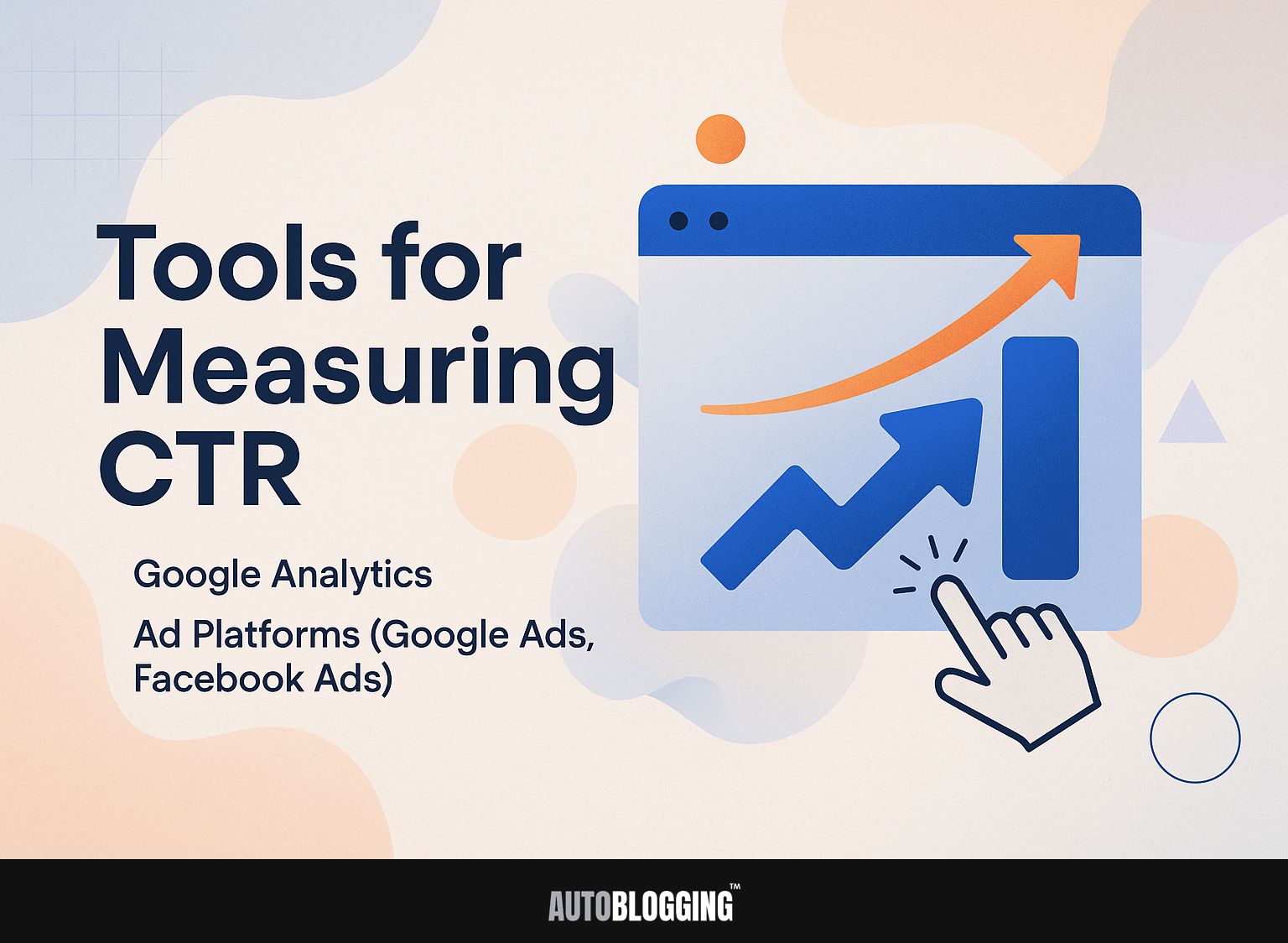
1. Google Analytics
Google Analytics provides specific data on click-through rates, allowing marketers to track user behavior and activity on their websites accurately.
To set up Google Analytics for measuring CTR, start by creating an account and adding your website’s tracking ID to its code. Next, focus on key metrics such as ‘Clicks’ and ‘Impressions’ under the ‘Acquisition’ section. Monitor these to calculate your CTR: divide ‘Clicks’ by ‘Impressions’ and multiply by 100.
Regularly reviewing the ‘Landing Pages’ report can help identify which pages drive the most traffic. Use this data to change content plans or make popular pages better for more interaction.
2. Ad Platforms (Google Ads, Facebook Ads)
Ad platforms like Google Ads and Facebook Ads offer strong analytics tools to track click-through rates and improve ad strategies based on performance data.
To make the most of these reporting tools, pay attention to important measurements like Click-Through Rate (CTR), Cost Per Click (CPC), and Conversion Rate.
In Google Ads, go to the ‘Reports’ section to sort your data by campaign or ad group, which helps you examine how well they are doing. For instance, identifying the top-performing ads can help you allocate budget more effectively.
On Facebook, use the ‘Ads Manager’ to break down CTR by demographics to determine your target audience’s responsiveness. By checking these measurements often, you can improve your plans for the best outcomes.
Common Mistakes to Avoid
Staying away from frequent errors in running campaigns can greatly improve click-through rates and marketing success.
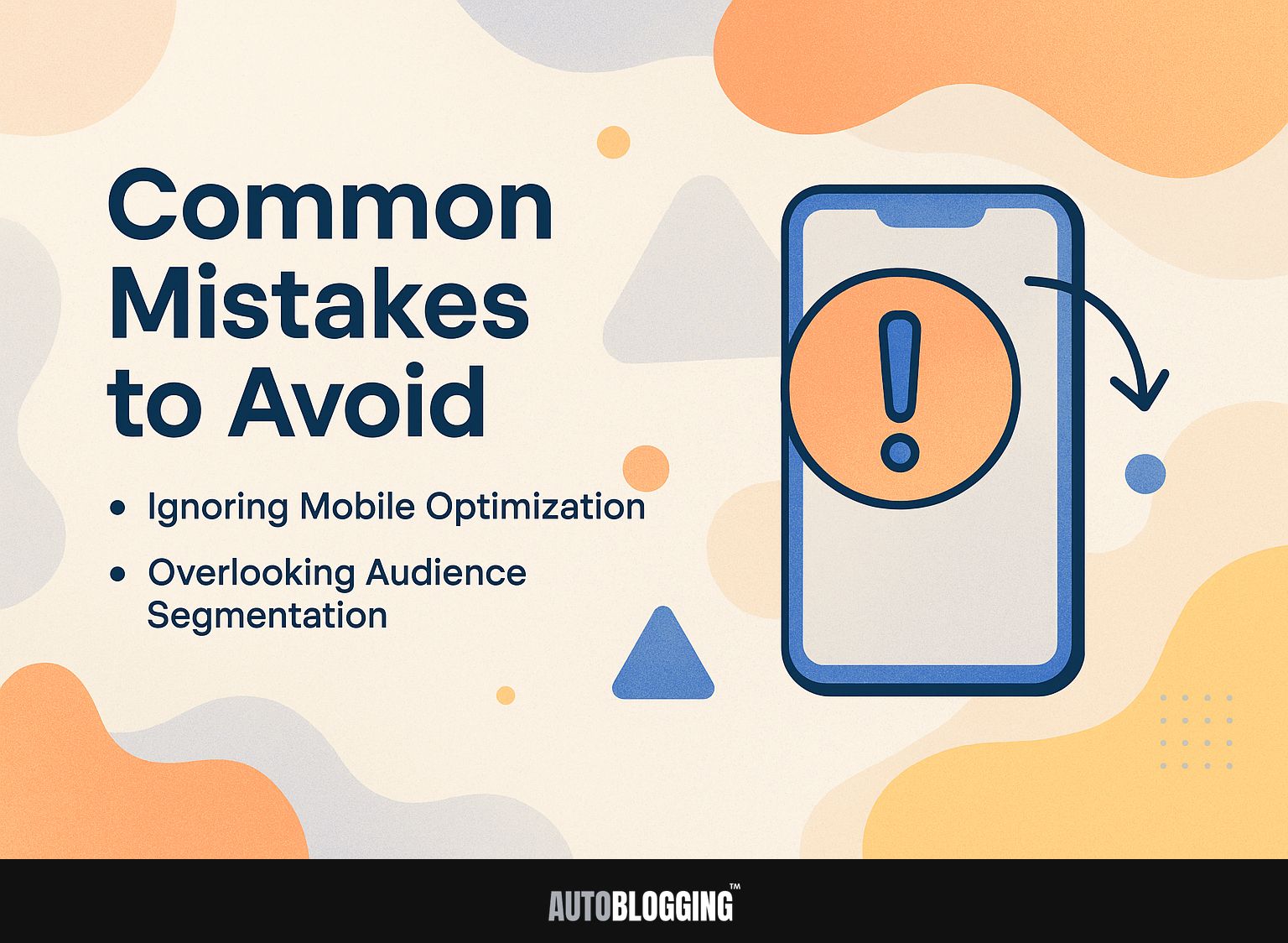
1. Ignoring Mobile Optimization
Ignoring mobile optimization can lead to a 20% drop in CTR, as more than half of web traffic now comes from mobile devices.
To improve mobile optimization, start by ensuring your landing pages are responsive, automatically adjusting to different screen sizes.
Use tools like Google’s Mobile-Friendly Test to check usability and identify issues. Make images load faster to prevent losing visitors due to slow page speed.
Simplify your ad formats; for example, use vertical video ads that are more engaging on mobile screens. Check your mobile performance data often using Google Analytics to improve your plan and make the user experience better.
2. Overlooking Audience Segmentation
Not dividing your audience can greatly reduce click-through rates, because general ads are less attractive than those that speak to particular interests.
To improve your click-through rate by grouping your audience effectively, begin by looking at demographic information like age, location, and preferences. Use tools like Google Analytics to identify high-performing segments.
For example, if you notice younger users engage more with mobile ads, tailor your campaigns specifically for that group. Consider behavioral segmentation by tracking user actions on your site to develop targeted retargeting strategies.
Trying out different messages for specific groups can help you learn what encourages more interaction, helping you improve your strategy regularly.
Frequently Asked Questions
1. What is CTR (Click-Through Rate)?
CTR (Click-Through Rate) is a metric used to measure the percentage of clicks a digital ad or link receives out of the total number of impressions it receives. It is calculated by dividing the number of clicks by the number of impressions and multiplying by 100.
2. Why is CTR important?
CTR is important because it helps advertisers and marketers understand the effectiveness of their ads or links. A high CTR indicates that the ad or link is successfully generating clicks and attracting the attention of the target audience.
3. What are the benchmarks for CTR?
The average CTR varies depending on the industry and type of ad, but a good benchmark is generally considered to be around 2%. However, this can differ greatly, so you should compare your CTR to industry and platform-specific standards to better assess its performance.
4. How can I improve my CTR?
There are several strategies you can use to improve your CTR, such as writing interesting and relevant ad content, focusing on the right audience, and using attention-grabbing images. It’s also important to constantly monitor and analyze your CTR to identify areas for improvement.
5. Does a high CTR guarantee success?
While a high CTR is a good indication of ad performance, it is not a guarantee of success. A high CTR could bring more visitors to a website, but if the site or landing page isn’t set up well for turning visits into sales, those clicks might not lead to purchases or sign-ups.
6. Are there any downsides to a high CTR?
A high CTR may also indicate that your targeting is too broad, leading to clicks from irrelevant audiences. This can result in wasted ad spend and a lower return on investment. It’s important to strike a balance between a high CTR and targeting the right audience for maximum effectiveness.
